I’ll be showing you some photos, taken in Santa Fe, NM, on Old Pecos Trail, January 8, 2020. They may or may not upset you. You are invited to share your views in the space designed for comments below. Please DO NOT post racist, violent, obscene, or insulting comments. They will be marked as spam and trashed. There is enough war in the world and we don’t need one here. The object of this exercise is twofold: first, in the spirit of Wholebeing Wellness, to help bring our unacknowledged wounds and/or biases to the surface of consciousness for healing, and second, to initiate a productive and hopefully positive dialogue. The question I’m asking is simply this: is it better to know what’s going on in our world and perhaps address it, or to hide from this knowledge in hopes that “it won’t happen here?” In a fast-shrinking world, NIMBY is not a choice– it’s a disease.
Granted, in Santa Fe, this sort of activism is somewhat unusual– not because of the content of the imagery but because of how and where it is displayed– in a private neighborhood rather than a public place. Indeed one mother, walking by with her two children, confronted me yesterday as I was taking the photos and demanded to know what I thought about them. When I told her I felt that the display was timely and appropriate she became upset and insisted that it was “disturbing to young families” to see this sort of thing where they walked every day. I reminded her that she had children the same age as those depicted here, implying that a little compassion might be in order. But she wasn’t having any of that, so I just ended the conversation and went on with the photo shoot.
About the images: They were created by a Navajo artist who calls himself Remy– taken from actual photographs, enlarged, and attached to the wall with wheat paste. The wall on which they are mounted belongs to Guthrie Miller, a retired Los Alamos Laboratory scientist who had an epiphany and decided to “out” the violence to which he believes our military industrial complex contributes. He is a brave man– one who, despite the strong opposition of many of his neighbors, continues to allow the nonprofit Santa Feans for Justice in Palestine to post images on his wall. As you can see, some objecting viewers have already begun to tear the images off the wall.
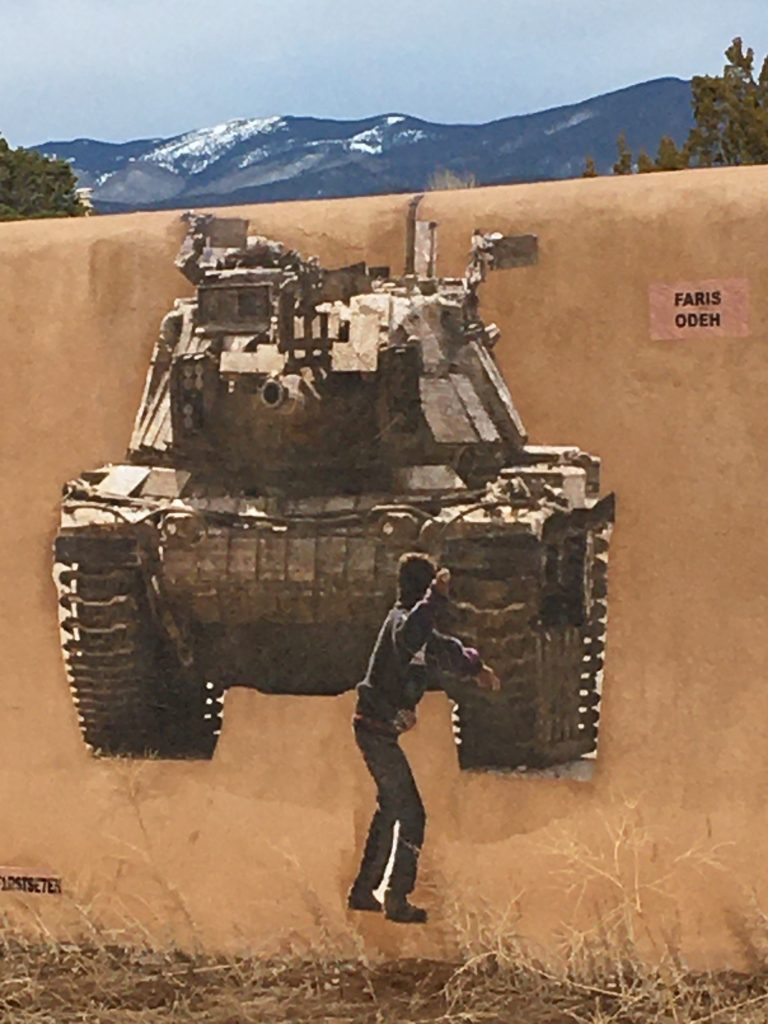
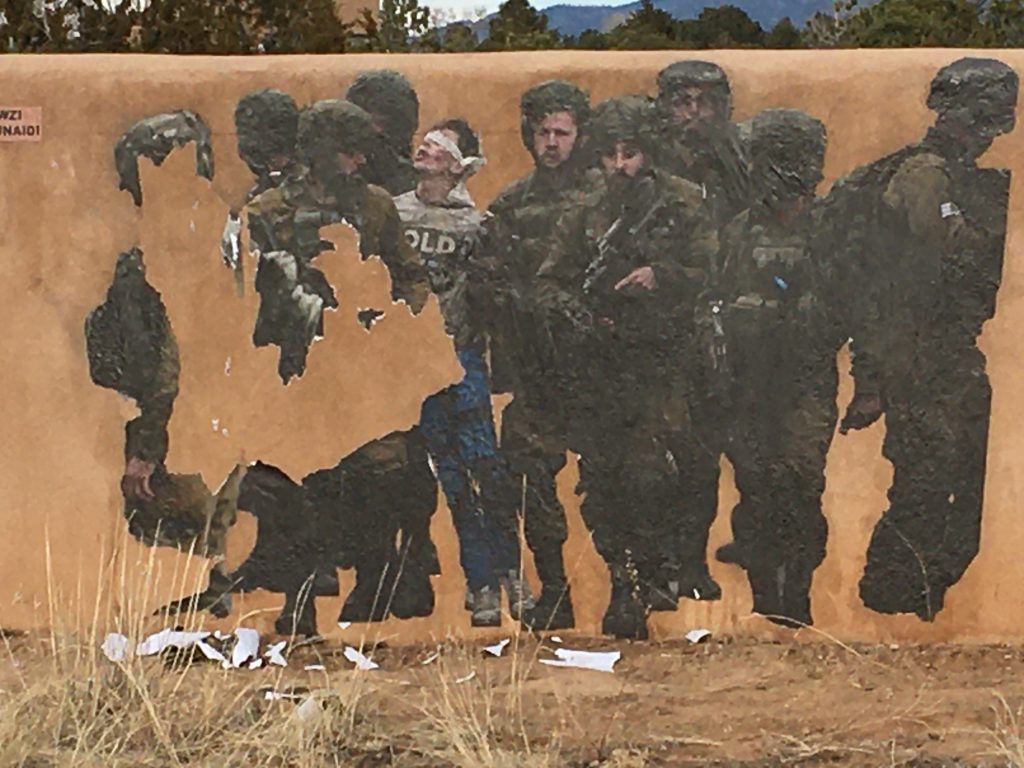
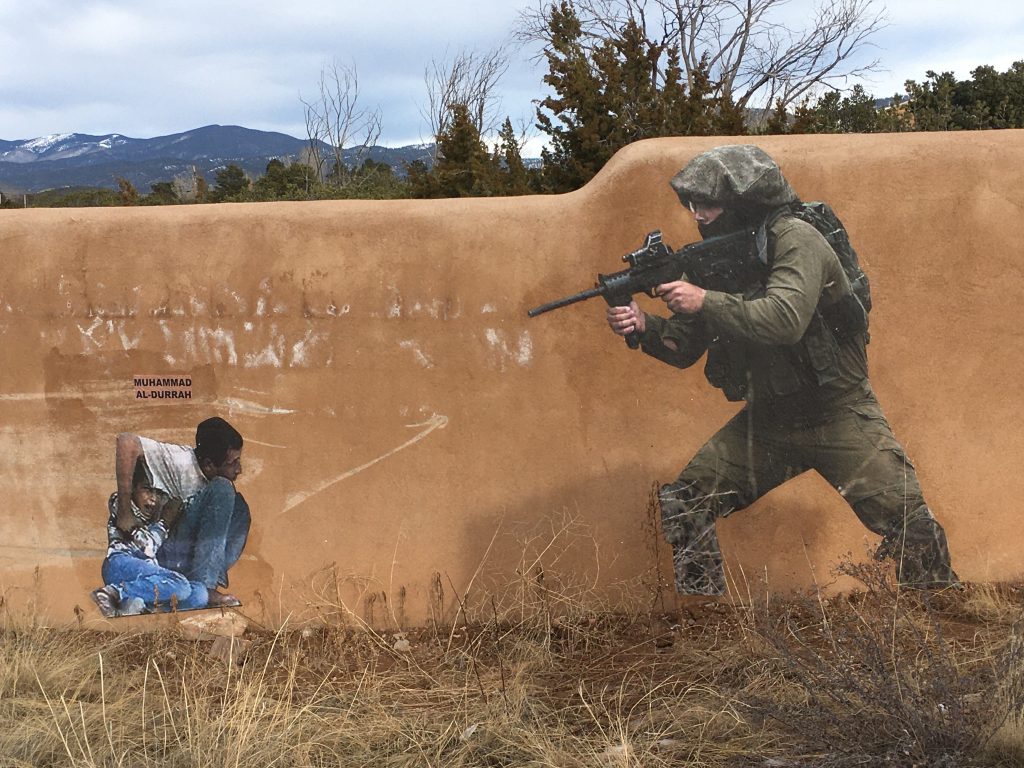

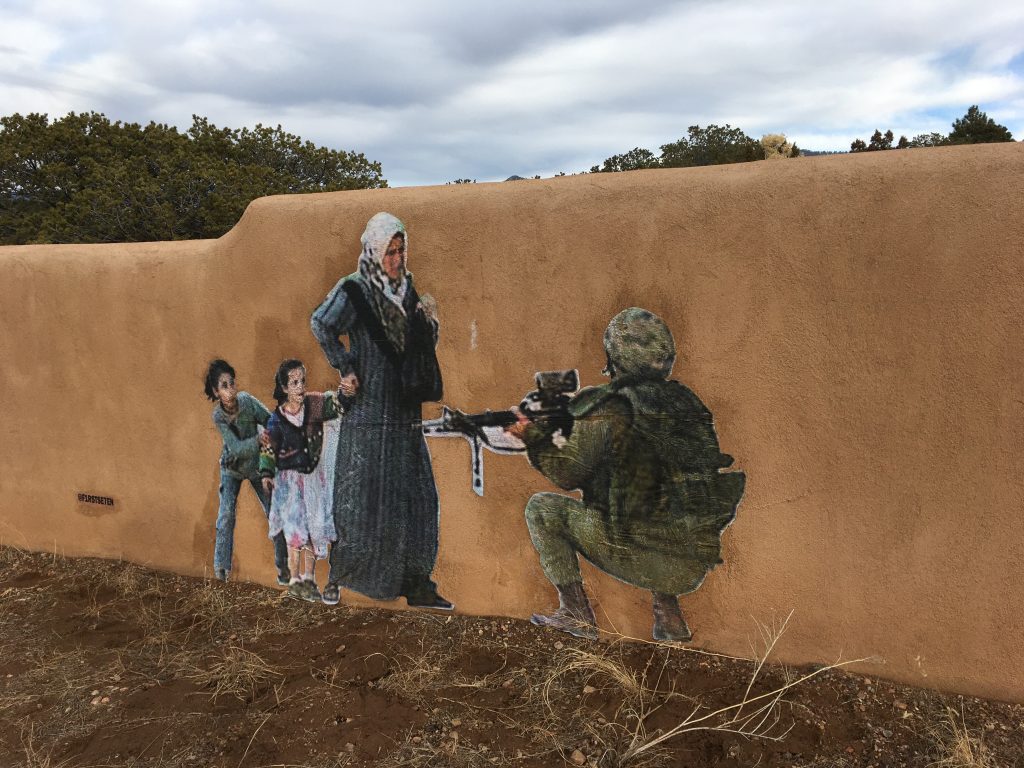
And finally, an image posted earlier by a different artist.
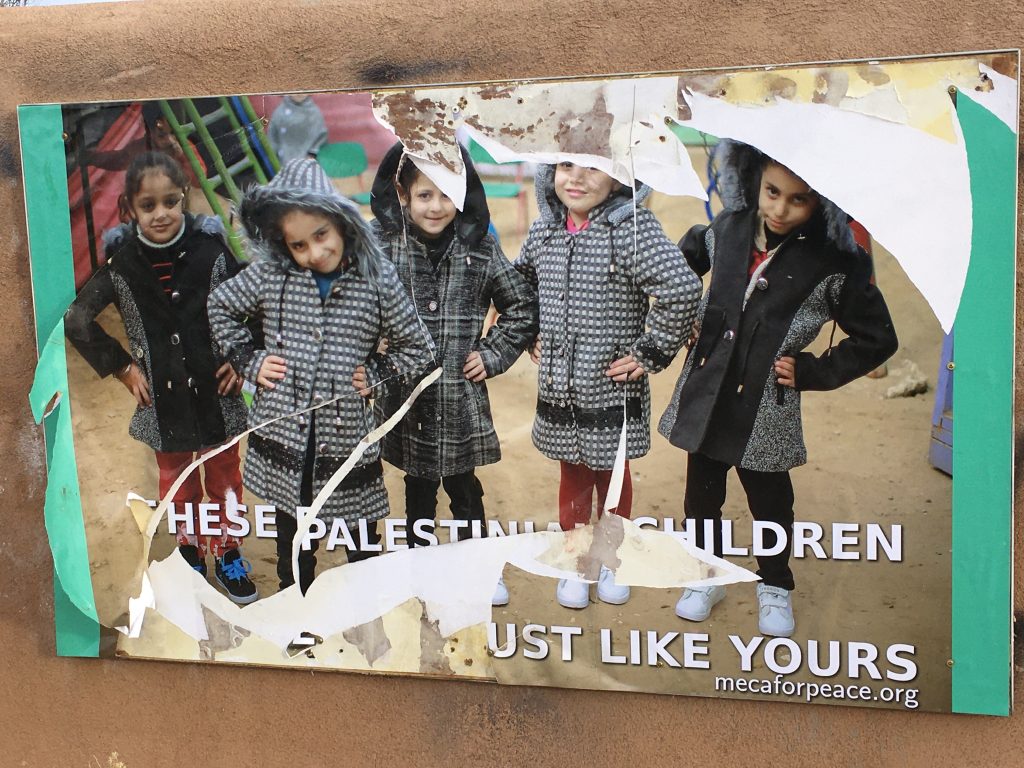
Feel free to comment– but remember, please be kind.

